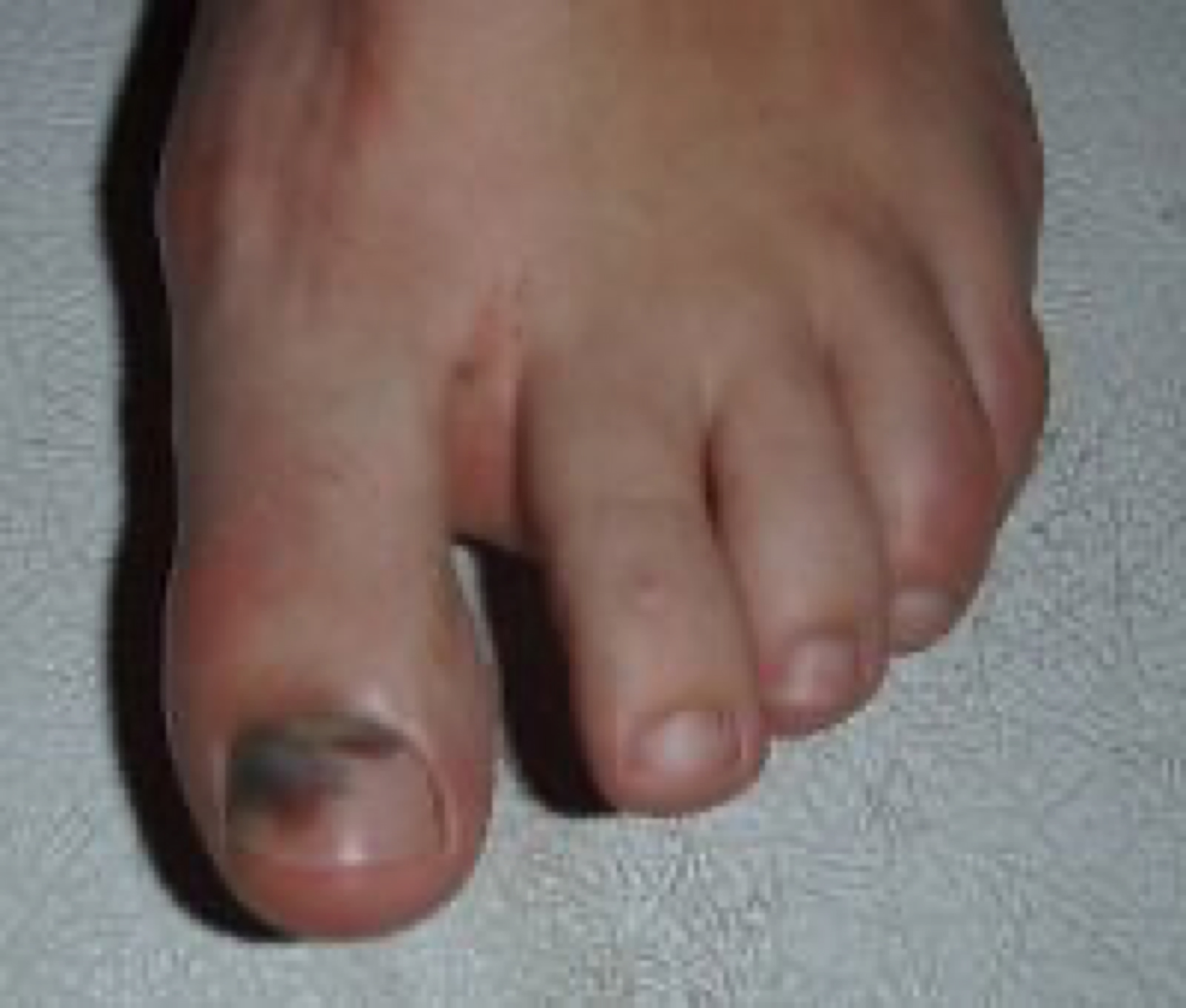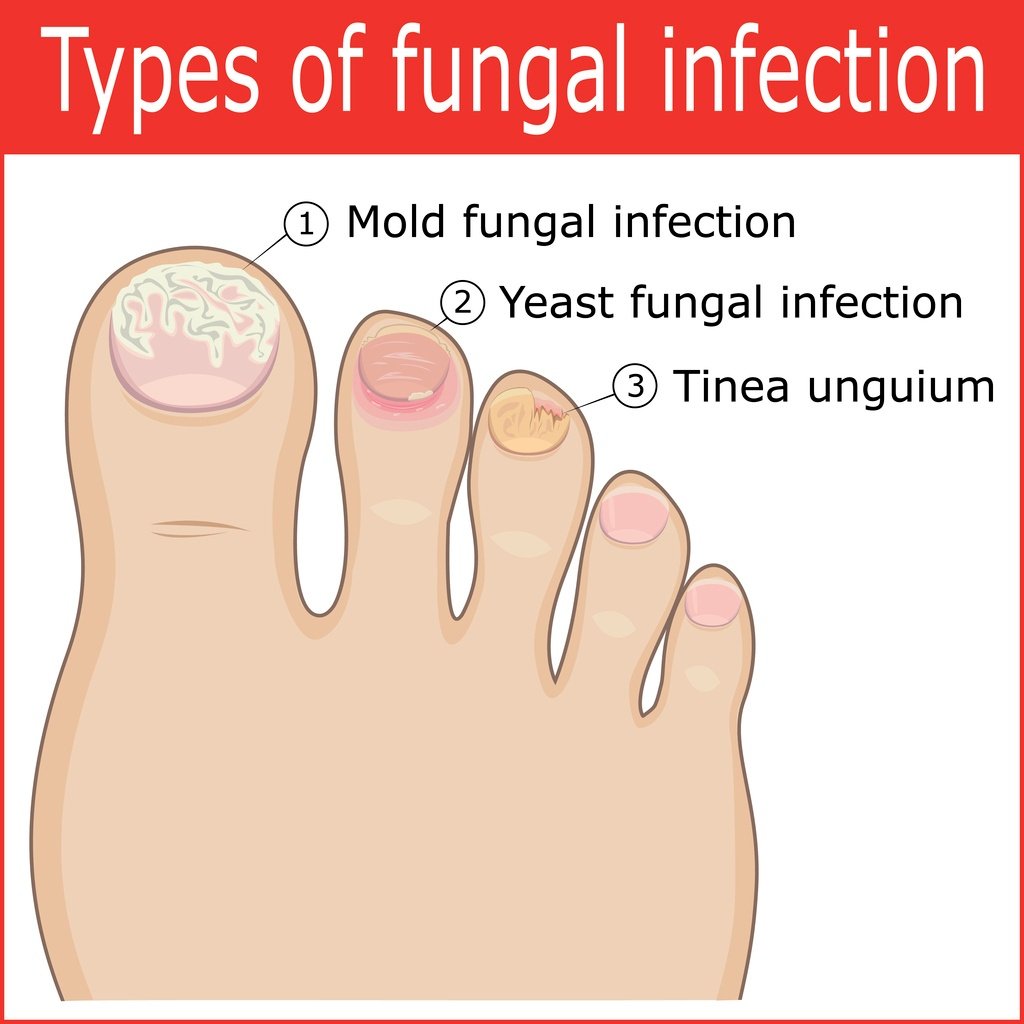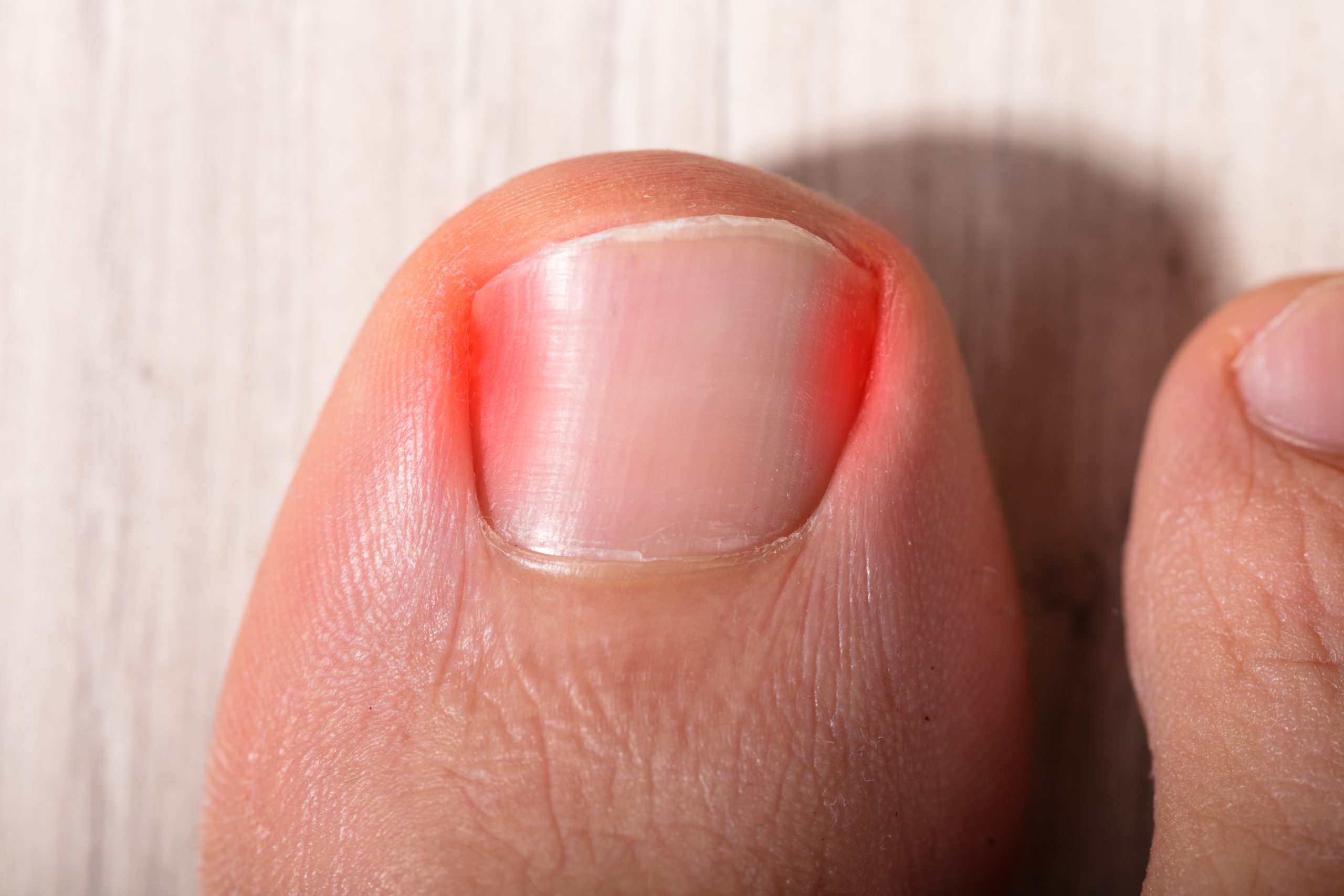Understanding the Discoloration: Why is My Big Toenail Turning Black?
A black big toenail can be a source of concern for many individuals, and understanding the underlying causes is crucial to addressing the issue effectively. The discoloration may be due to several factors, including injury, fungal infection, or melanoma. This article will delve into each of these causes and discuss the symptoms to look out for.
Injury is a common cause of a black big toenail. Trauma to the nail bed, such as stubbing the toe or dropping a heavy object on it, can result in bruising or bleeding underneath the nail. This condition, known as a subungual hematoma, can cause the nail to appear black or purple. In some cases, the nail may become detached from the nail bed, leading to pain and further discoloration.
Fungal infections can also lead to a black big toenail. Fungi thrive in warm, moist environments, making the feet a prime target. When fungi infect the toenail, it can become thick, brittle, and discolored, often appearing yellow, green, or black. This condition, known as onychomycosis, can be challenging to treat and may require medical intervention.
Lastly, melanoma, a type of skin cancer, can cause a black big toenail. Although rare, melanoma can develop in the nail bed, leading to discoloration. This form of melanoma, known as subungual melanoma, can be aggressive and should be diagnosed and treated promptly. Symptoms to look out for include a dark streak or band running the length of the nail, a brown or black spot under the nail, and nail separation from the nail bed.
In conclusion, a black big toenail can result from injury, fungal infection, or melanoma. Understanding the symptoms associated with each cause is essential to seeking appropriate treatment and maintaining healthy toenails. If you are experiencing discoloration or other changes to your toenails, it is recommended to consult a podiatrist or dermatologist for a proper diagnosis and treatment plan.
Preventive Measures: How to Avoid Discoloration of the Toenail
Taking preventive measures is crucial to maintaining healthy toenails and avoiding discoloration. By following these tips, you can significantly reduce the risk of developing a black big toenail due to injury, fungal infection, or other causes.
First and foremost, proper nail care is essential. Keep your toenails trimmed straight across, and avoid cutting them too short. This practice helps prevent ingrown toenails, which can lead to discoloration and infection. Additionally, avoid using your toenails as tools to pick or pry objects, as this can cause trauma and result in discoloration.
Wearing well-fitted shoes is another critical preventive measure. Shoes that are too tight or narrow can cause trauma to the toenails, leading to discoloration. Ensure that your shoes have enough room in the toe box and are not causing any discomfort or pain. It is also essential to avoid walking barefoot in public areas, such as locker rooms or swimming pools, to reduce the risk of fungal infections.
Maintaining good foot hygiene is crucial in preventing toenail discoloration. Wash your feet daily with soap and water, and dry them thoroughly, especially between the toes. This practice helps prevent fungal infections and keeps your feet clean and healthy. Apply a moisturizer to your feet to prevent dryness and cracking, but avoid applying it between the toes, as this can create a moist environment that promotes fungal growth.
Lastly, avoiding traumas to the toenails is essential. Be mindful of your surroundings and avoid dropping heavy objects on your feet or stubbing your toes. If you participate in sports or activities that increase the risk of toenail trauma, consider wearing protective footwear or using toe guards to prevent injury.
In conclusion, taking preventive measures, such as proper nail care, wearing well-fitted shoes, maintaining good foot hygiene, and avoiding traumas, can help prevent toenail discoloration and maintain healthy, attractive toenails. By following these tips, you can reduce the risk of developing a black big toenail and keep your feet looking and feeling their best.
Identifying Injuries: When to Suspect Trauma as the Culprit
Trauma is a common cause of a black big toenail, and identifying the injury is crucial to addressing the issue effectively. This section will discuss how to identify if trauma is the cause of the discoloration, explain common injuries that can lead to a black big toenail, and provide tips on how to treat them.
To identify if trauma is the cause of a black big toenail, look for the following symptoms:
- Discoloration: The nail may appear black, purple, or blue due to bleeding under the nail.
- Pain: Trauma can cause pain or discomfort in the toe, especially when pressure is applied.
- Swelling: The toe may be swollen or tender to the touch due to inflammation.
- Nail Separation: The nail may separate from the nail bed, leading to further discoloration and pain.
Common injuries that can lead to a black big toenail include stubbing the toe, dropping a heavy object on the toe, or wearing ill-fitting shoes that cause repetitive trauma. To treat these injuries, follow these steps:
- Rest: Avoid putting weight on the injured toe and allow it to rest.
- Ice: Apply ice to the injured toe to reduce swelling and inflammation.
- Compression: Wrap the toe with a bandage or compression wrap to provide support and reduce swelling.
- Elevation: Elevate the foot above the heart to reduce swelling and promote healing.
If the injury is severe, such as a fracture or severe bleeding, seek medical attention immediately. A podiatrist or healthcare professional can provide appropriate treatment and ensure that the injury heals properly.
In conclusion, identifying trauma as the cause of a black big toenail is essential to seeking appropriate treatment and maintaining healthy toenails. By understanding the symptoms of trauma and common injuries that can lead to discoloration, individuals can take steps to prevent and treat injuries and maintain healthy, attractive toenails.
Recognizing Fungal Infections: The Link Between Fungus and Toenail Discoloration
Fungal infections are a common cause of toenail discoloration, and recognizing the symptoms is crucial to seeking appropriate treatment. This section will explain how fungal infections can cause toenail discoloration, describe the symptoms of fungal infections, and provide tips on how to distinguish them from other causes.
Fungal infections can cause the toenail to become yellow, green, or black, and can also lead to thickening, crumbling, and brittleness. The infection can affect the entire nail or just a portion of it, and can spread to other nails if left untreated. Fungal infections thrive in warm, moist environments, making the feet a prime target.
The following are symptoms of fungal infections in the toenails:
- Discoloration: The nail may appear yellow, green, or black due to the presence of fungi.
- Thickening: The nail may become thick and difficult to trim due to the buildup of fungi.
- Brittleness: The nail may become brittle and prone to cracking or crumbling.
- Odor: The nail may emit a foul odor due to the presence of fungi.
- Separation: The nail may separate from the nail bed, leading to further discoloration and pain.
To distinguish fungal infections from other causes of toenail discoloration, such as injury or melanoma, look for the following signs:
- Multiple nails affected: Fungal infections often affect multiple nails, while injury or melanoma is more likely to affect only one nail.
- Slow progression: Fungal infections typically progress slowly over time, while injury or melanoma can cause sudden changes in the nail.
- Absence of pain: Fungal infections are often painless, while injury or melanoma can cause pain or discomfort in the toe.
If you suspect that you have a fungal infection in your toenail, it is essential to seek medical attention. A podiatrist or healthcare professional can provide an accurate diagnosis and recommend appropriate treatment options. Treatment for fungal infections may include topical creams, oral medications, or laser therapy, depending on the severity of the infection.
In conclusion, recognizing the link between fungal infections and toenail discoloration is crucial to seeking appropriate treatment and maintaining healthy toenails. By understanding the symptoms of fungal infections and how to distinguish them from other causes, individuals can take steps to prevent and treat fungal infections and maintain attractive, healthy toenails.
Seeking Medical Attention: When to Consult a Podiatrist or Dermatologist
While some cases of toenail discoloration can be treated at home, it is essential to seek medical attention when necessary. This section will discuss when it is appropriate to consult a podiatrist or dermatologist for a discolored toenail, and explain the role of these healthcare professionals in diagnosing and treating toenail discoloration.
Consult a podiatrist or dermatologist if you experience any of the following symptoms:
- Sudden or severe discoloration: If your toenail has turned black suddenly or is severely discolored, it may be a sign of a serious underlying condition, such as melanoma.
- Pain or discomfort: If your discolored toenail is causing pain or discomfort, it may be a sign of an infection or injury that requires medical attention.
- Spreading discoloration: If the discoloration is spreading to other toenails or areas of the foot, it may be a sign of a fungal infection or other underlying condition.
- Persistent discoloration: If the discoloration has not improved after trying home remedies or over-the-counter treatments, it may be time to seek medical attention.
Podiatrists and dermatologists are healthcare professionals who specialize in diagnosing and treating conditions of the feet and skin, respectively. They can provide an accurate diagnosis of the underlying cause of toenail discoloration and recommend appropriate treatment options.
Podiatrists may perform the following tests to diagnose the underlying cause of toenail discoloration:
- Visual examination: A podiatrist can examine the toenail and surrounding skin for signs of injury, infection, or other underlying conditions.
- Clip testing: A small piece of the affected toenail may be clipped off and sent to a lab for analysis.
- Culture testing: A sample of debris from under the toenail may be sent to a lab to test for fungal or bacterial infections.
Dermatologists may perform the following tests to diagnose the underlying cause of toenail discoloration:
- Visual examination: A dermatologist can examine the toenail and surrounding skin for signs of injury, infection, or other underlying conditions.
- Skin scraping: A small sample of skin cells from the affected area may be scraped off and sent to a lab for analysis.
- Biopsy: In rare cases, a small piece of tissue from the affected area may be removed and sent to a lab for analysis.
Once the underlying cause of toenail discoloration has been diagnosed, a podiatrist or dermatologist can recommend appropriate treatment options. Treatment may include topical creams, oral medications, or laser therapy, depending on the severity and underlying cause of the discoloration.
In conclusion, seeking medical attention for a discolored toenail is essential when necessary. Podiatrists and dermatologists are healthcare professionals who can provide an accurate diagnosis and recommend appropriate treatment options. By understanding when to consult a podiatrist or dermatologist, individuals can take steps to address toenail discoloration and maintain healthy, attractive toenails.
Treatment Options: How to Restore the Natural Color of Your Toenail
The treatment options for a discolored toenail depend on the underlying cause. In this section, we will provide an overview of treatment options for a discolored toenail, including both home remedies and medical treatments such as topical creams, oral medications, and laser therapy.
Home Remedies
For minor cases of toenail discoloration, home remedies may be effective. Here are some home remedies to consider:
- Vinegar soak: Soak your foot in a solution of equal parts white vinegar and warm water for 15 to 20 minutes, once or twice a day. The acidity of the vinegar can help to kill fungus and bacteria.
- Tea tree oil: Apply tea tree oil directly to the affected toenail using a cotton swab, once or twice a day. Tea tree oil has antifungal and antiseptic properties that can help to treat fungal infections.
- Baking soda: Mix baking soda with water to form a paste, and apply it directly to the affected toenail. Leave it on for 15 to 20 minutes, then rinse it off. Baking soda has antifungal properties that can help to kill fungus and bacteria.
Medical Treatments
For more severe cases of toenail discoloration, medical treatments may be necessary. Here are some medical treatments to consider:
- Topical creams: Over-the-counter or prescription-strength topical creams can be applied directly to the affected toenail to treat fungal infections or other underlying conditions.
- Oral medications: Prescription oral medications, such as antifungal drugs, can be taken to treat fungal infections or other underlying conditions.
- Laser therapy: Laser therapy can be used to treat fungal infections or other underlying conditions. The laser beam is directed at the affected toenail, killing the fungus and promoting the growth of healthy nail tissue.
It is essential to note that medical treatments should only be used under the guidance of a healthcare professional. A podiatrist or dermatologist can provide an accurate diagnosis and recommend appropriate treatment options based on the underlying cause of toenail discoloration.
In conclusion, the treatment options for a discolored toenail depend on the underlying cause. Home remedies may be effective for minor cases, while medical treatments may be necessary for more severe cases. By understanding the treatment options available, individuals can take steps to restore the natural color of their toenail and maintain healthy, attractive toenails.
Maintaining Healthy Toenails: Long-Term Strategies for Prevention
Maintaining healthy toenails is essential for preventing discoloration and other nail problems. Here are some long-term strategies for prevention that you can follow to keep your toenails looking their best.
Regular Nail Trimming
Regularly trimming your toenails can help prevent ingrown toenails and other nail problems. Use a clean, sharp nail clipper to trim your toenails straight across, and avoid cutting them too short. This can help prevent the nail from growing into the skin and causing an infection.
Proper Foot Hygiene
Maintaining good foot hygiene is essential for preventing fungal infections and other nail problems. Wash your feet daily with soap and water, and dry them thoroughly, including the spaces between your toes. This can help prevent the growth of fungus and bacteria that can cause nail discoloration and other problems.
Wearing Well-Fitted Shoes
Wearing well-fitted shoes can help prevent toenail discoloration and other problems caused by trauma. Make sure your shoes fit properly and provide enough room for your toes. Avoid wearing shoes that are too tight or narrow, as they can cause your toenails to become damaged or discolored.
Protecting Your Toenails
Protecting your toenails can help prevent trauma and other causes of discoloration. Wear protective footwear when participating in sports or other activities that can cause trauma to your toenails. Avoid picking or pulling at your toenails, as this can cause damage and lead to discoloration.
Regular Check-ups
Regularly checking your toenails for signs of discoloration or other problems can help you catch issues early and prevent them from becoming more serious. If you notice any changes in the color, shape, or texture of your toenails, consult a podiatrist or dermatologist for a proper diagnosis and treatment.
In conclusion, maintaining healthy toenails is essential for preventing discoloration and other nail problems. By following these long-term strategies for prevention, you can keep your toenails looking their best and avoid the need for medical treatments. Remember to trim your toenails regularly, maintain good foot hygiene, wear well-fitted shoes, protect your toenails, and regularly check your toenails for signs of discoloration or other problems.







